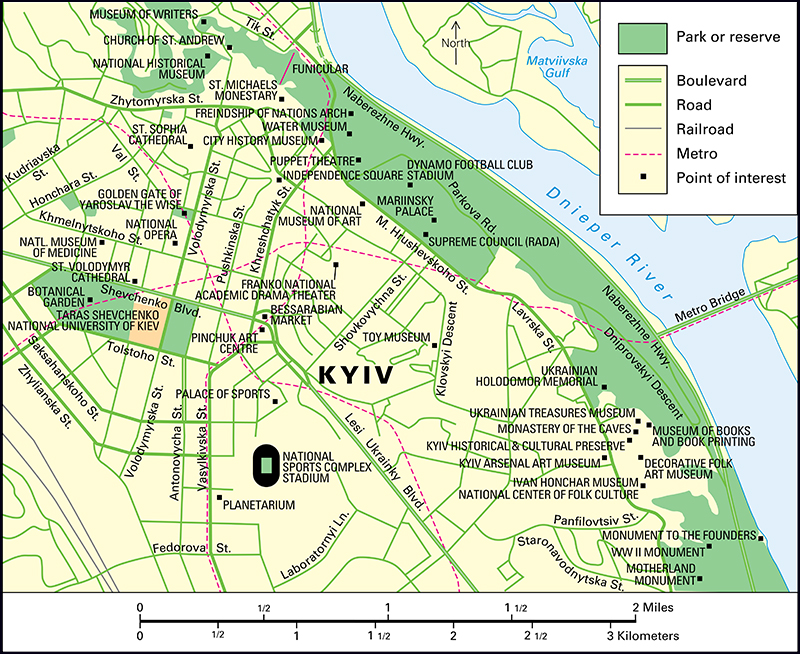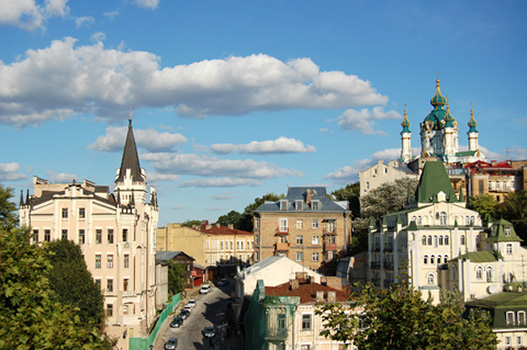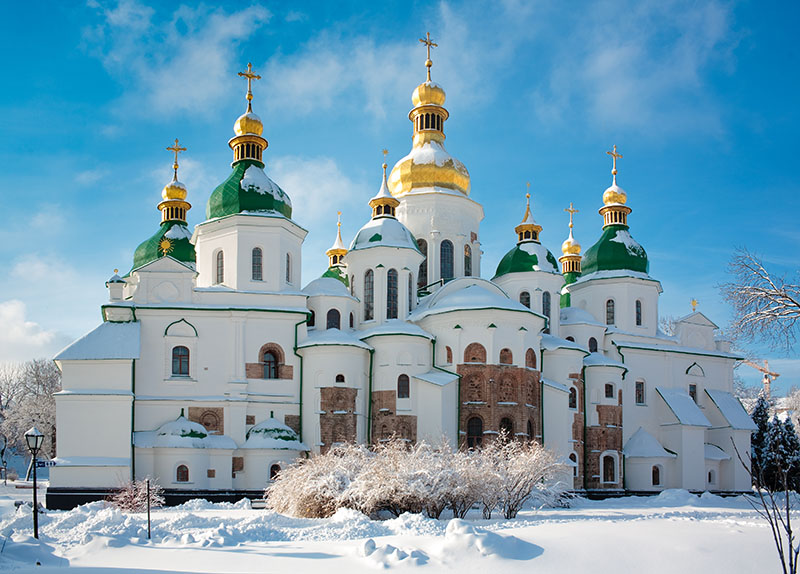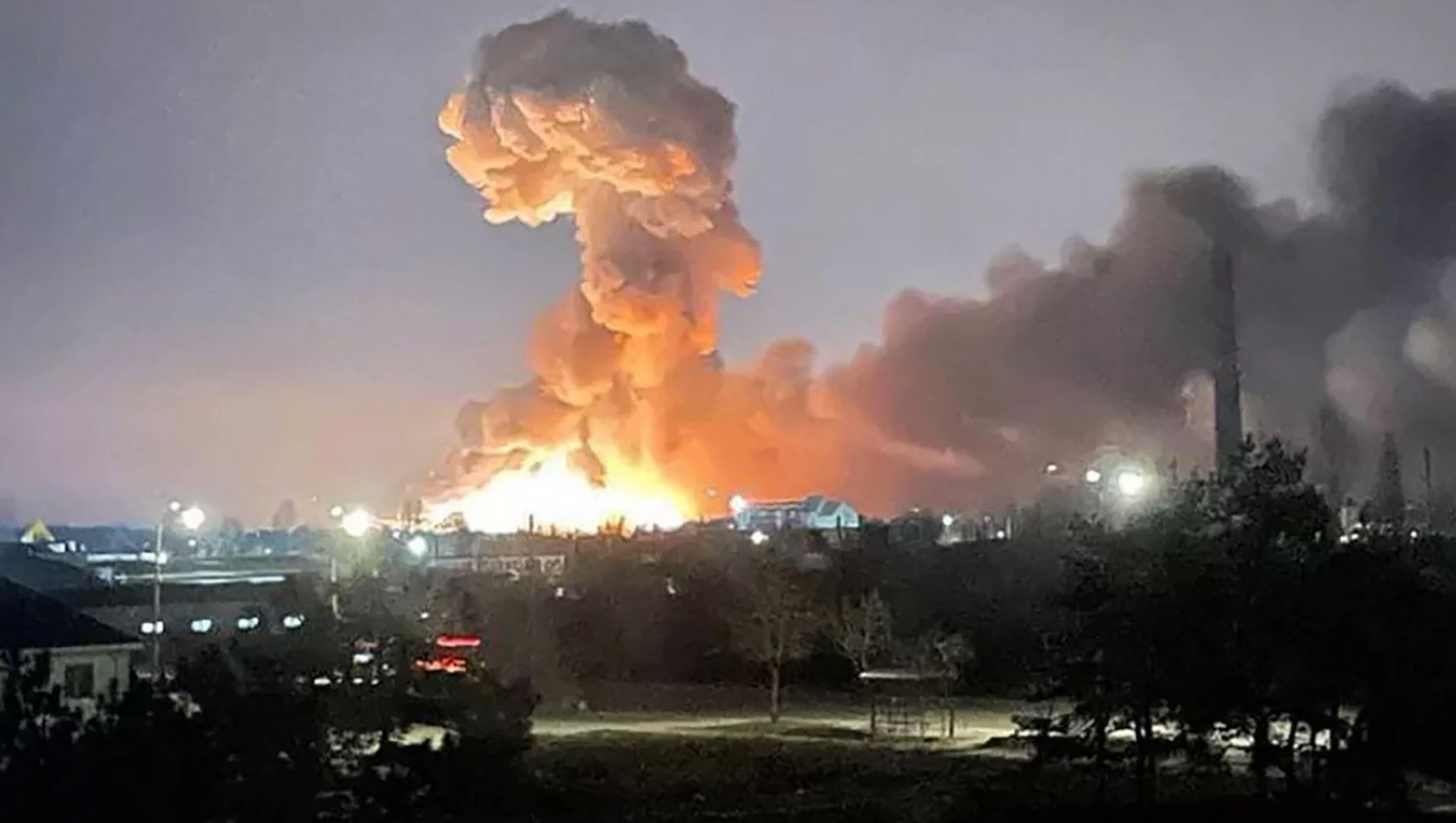Kyiv << KEE eev >> (pop. 2,868,702) is the capital and largest city of Ukraine. Its name is sometimes spelled Kiev. The city is the political, economic, and cultural center of the country. It lies in north-central Ukraine on the Dnieper River (Dnipro in Ukrainian), in a rich agricultural and industrial region.

Kyiv’s central area lies on the hilly western bank of the Dnieper. There, modern buildings stand near medieval ones. Landmarks include St. Sophia Cathedral and the Golden Gate of Yaroslav the Wise, both built in the 1000’s, during the Middle Ages. The Monastery of the Caves, which has a network of catacombs (underground burial tunnels), also dates from the Middle Ages. The Mariinsky Palace and the Church of St. Andrew were built during the mid-1700’s and are important examples of the architecture of that period.

Kyiv is known for its attractive parks and famous main boulevard, Khreshchatyk Street. The city has a number of colleges, universities, and research institutes. It also has many museums and theaters.
Kyiv is a major manufacturing and transportation center. Its chief products include chemicals, food products, machinery, and paper and wood products. The city is an important highway and railroad junction, an air transportation hub, and a busy river port.
Kyiv was founded by Slavic people, possibly as early as the A.D. 400’s. It prospered as a trading center and, during the late 800’s, became the capital of the first East Slavic state, called Kievan Rus. See Russia (Early days) (The state of Kievan Rus).
By the 1000’s, Kyiv was one of Europe’s greatest centers of commerce and culture. Mongol invaders destroyed much of the city in 1240. Kyiv was rebuilt in the 1300’s. It came under Lithuanian rule in 1362 and under Polish rule in 1569. Russia regained control of Kyiv in 1654.

In 1934, Kyiv became the capital of the Ukrainian Soviet Socialist Republic of the Soviet Union, which had been formed under Russia’s leadership in 1922. From 1941 to 1943, during World War II, the city was occupied by the German army and was badly damaged. It was rebuilt after the war and grew rapidly. In 1986, an explosion and fire occurred in a nuclear reactor at Chernobyl (now Chornobyl), near Kyiv. See Nuclear energy (Safety concerns).
In 1991, following an upheaval in the Soviet Union, Ukraine and other Soviet republics declared their independence. In December of that year, the Soviet Union was dissolved.
Kyiv’s central Independence Square has been the site of several major antigovernment demonstrations. In late 2004 and early 2005, thousands of Ukrainians camped in the square and protested following a disputed presidential election. In late 2013 and early 2014, protesters again occupied the square in an uprising that led to the overthrow of President Viktor Yanukovych.
Yanukovych had been generally friendly toward Russia. After his overthrow, Russia sought ways to weaken pro-Western Ukrainian leaders and gain influence over Ukraine. Russia seized the Crimean Peninsula from Ukraine in 2014. In February 2022, Russia invaded Ukraine and fired missiles into Ukrainian cities, including Kyiv. During the next several weeks, Ukrainian forces pushed back a Russian military attempt to surround and capture Kyiv. Intense fighting continued in eastern Ukraine. In November, Russian forces increased their bombing of Kyiv and other cities, targeting electrical power stations and other infrastructure that would be needed by the civilian population, especially in the winter months. 
